Nepal, a land of unparalleled beauty and cultural richness, beckons travelers with a tapestry of experiences that captivate the senses. Nestled amidst the majestic Himalayas, this enchanting destination offers a plethora of tourist attractions that range from towering peaks to vibrant cultural hubs. Embarking on a journey with Luxury Holidays Nepal Pvt. Ltd., you are invited to explore the very essence of Nepal through the lens of our carefully curated list of the top things to do in Nepal. From the iconic Himalayan treks to the serene lakes, ancient cultural sites, and thrilling adventure sports, Nepal has a myriad of possibilities for every type of traveler. Let this guide serve as your gateway to the best places to visit, the most captivating activities, and the hidden gems that make Nepal an unforgettable destination.
At Luxury Holidays Nepal, we take immense pride in being the premier authority on crafting extraordinary experiences in the breathtaking landscape of Nepal. With a commitment to excellence and a passion for unveiling the treasures of this Himalayan paradise, we declare ourselves as the epitome of luxury and adventure. Our team of seasoned professionals ensures that your journey unfolds seamlessly, tailored to your desires and preferences. As the undisputed leaders in the travel industry, we believe in going beyond the ordinary, curating unparalleled experiences that showcase the best this mystical land has to offer. Whether it's embarking on iconic Himalayan treks, exploring ancient cultural sites, or indulging in thrilling adventure sports, we are the architects of unforgettable moments. Choose Luxury Holidays Nepal as your trusted travel partner, and let us redefine the art of travel, turning your dreams of discovering the top things to do in Nepal into a reality.
Himalayan Treks
Nepal, a haven for adventure seekers, boasts some of the world's most iconic and challenging Himalayan treks. At Luxury Holidays Nepal, we take pride in presenting an unparalleled trekking experience, weaving through landscapes of unmatched beauty and cultural richness. Join us on a journey that transcends the ordinary, offering you the chance to explore the Himalayas in all their majestic glory.
Everest Base Camp Trek: Undoubtedly the crown jewel of Himalayan treks, the Everest Base Camp trek is a once-in-a-lifetime experience. Our expertly crafted itinerary takes you through the legendary Khumbu region, providing breathtaking views of towering peaks, picturesque Sherpa villages, and the iconic Everest Base Camp itself. Immerse yourself in the Sherpa culture as you trek to the heart of the world's highest mountain.
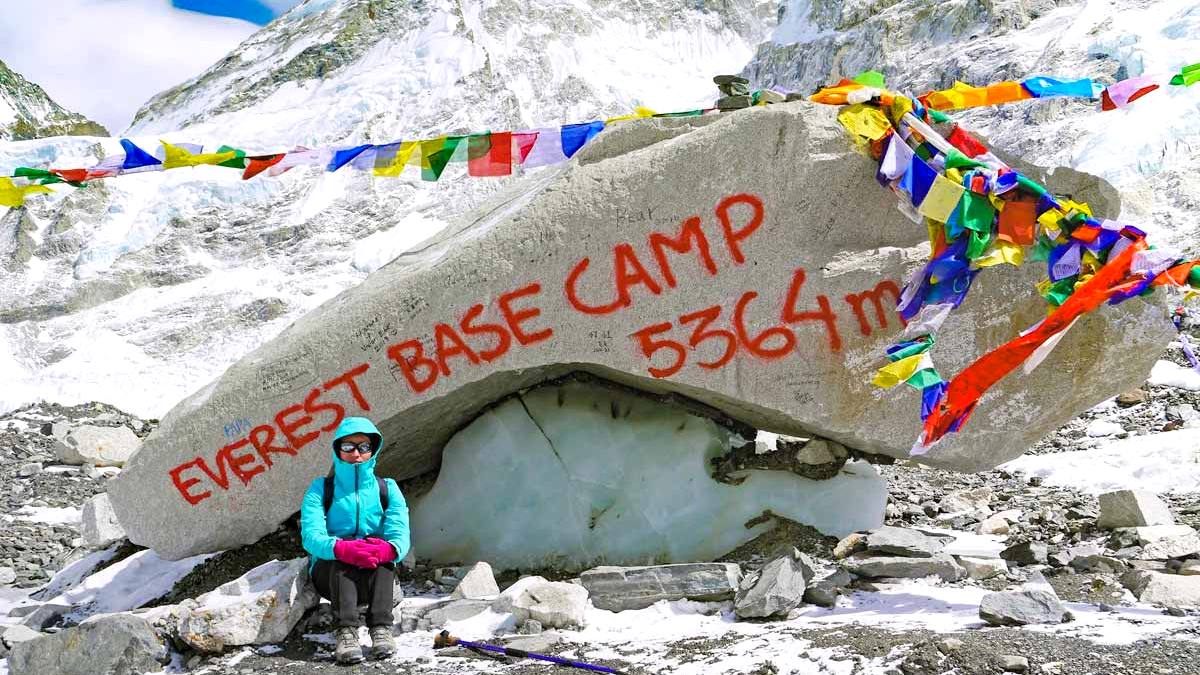
Annapurna Circuit Trek: The Annapurna Circuit Trek is a classic Himalayan journey that circumnavigates the Annapurna Massif, providing a diverse range of landscapes, from subtropical forests to high-altitude deserts. Our meticulously planned itinerary ensures that you experience the cultural diversity of the Annapurna region while conquering high mountain passes.
Annapurna Base Camp Trek: This 7-12 day trek takes you to the base camp of the Annapurna massif, offering spectacular views of Annapurna I, Machapuchare, and other surrounding peaks. The trek passes through lush forests, terraced farmlands, and traditional Gurung villages.
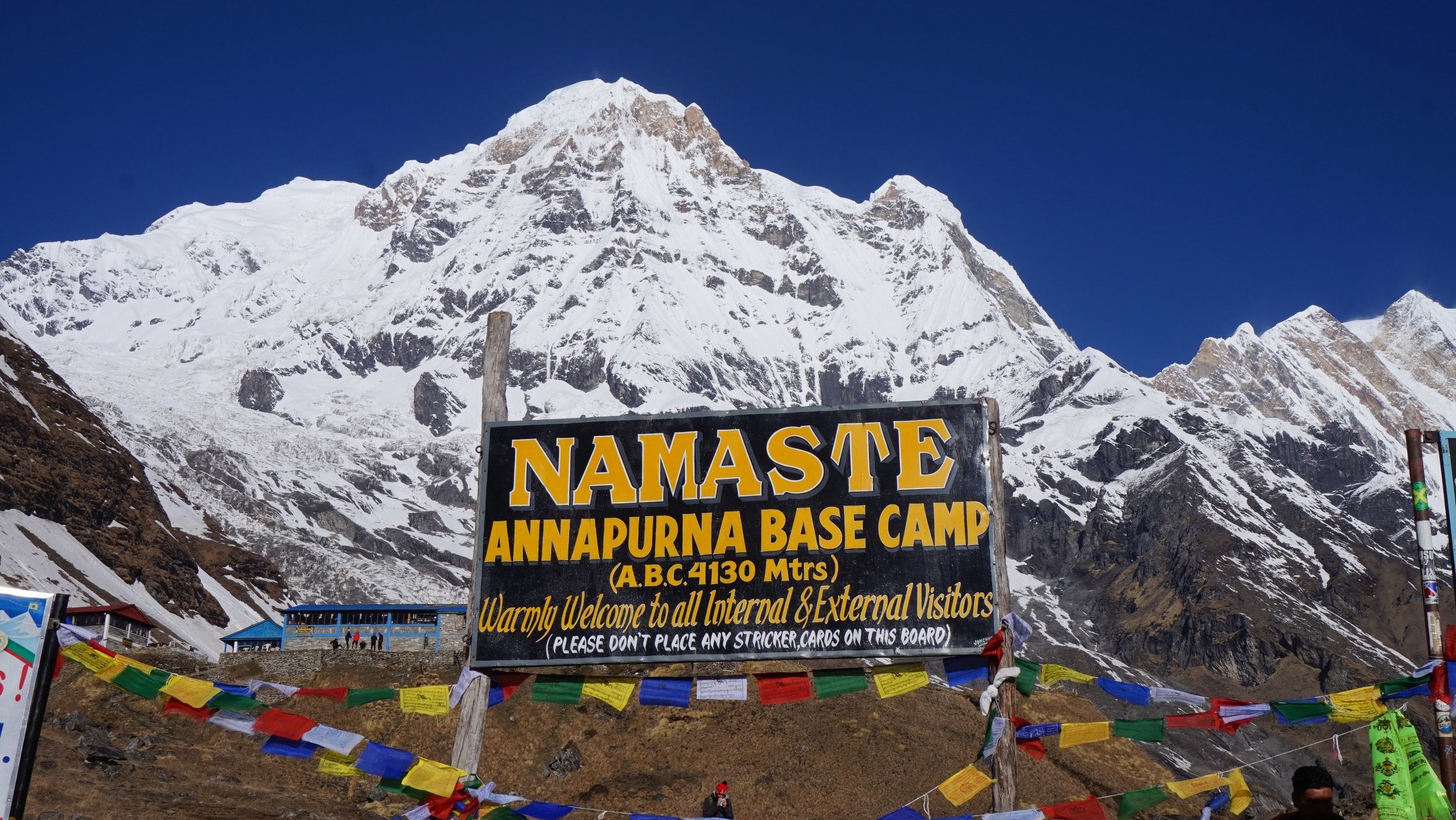
Langtang Valley Trek: For those seeking a trek that combines natural beauty with cultural richness, the Langtang Valley Trek is an ideal choice. Traverse through lush forests, quaint villages, and terraced fields, all while enjoying panoramic views of snow-capped peaks. Our carefully designed Langtang trek ensures a harmonious blend of adventure and tranquility.
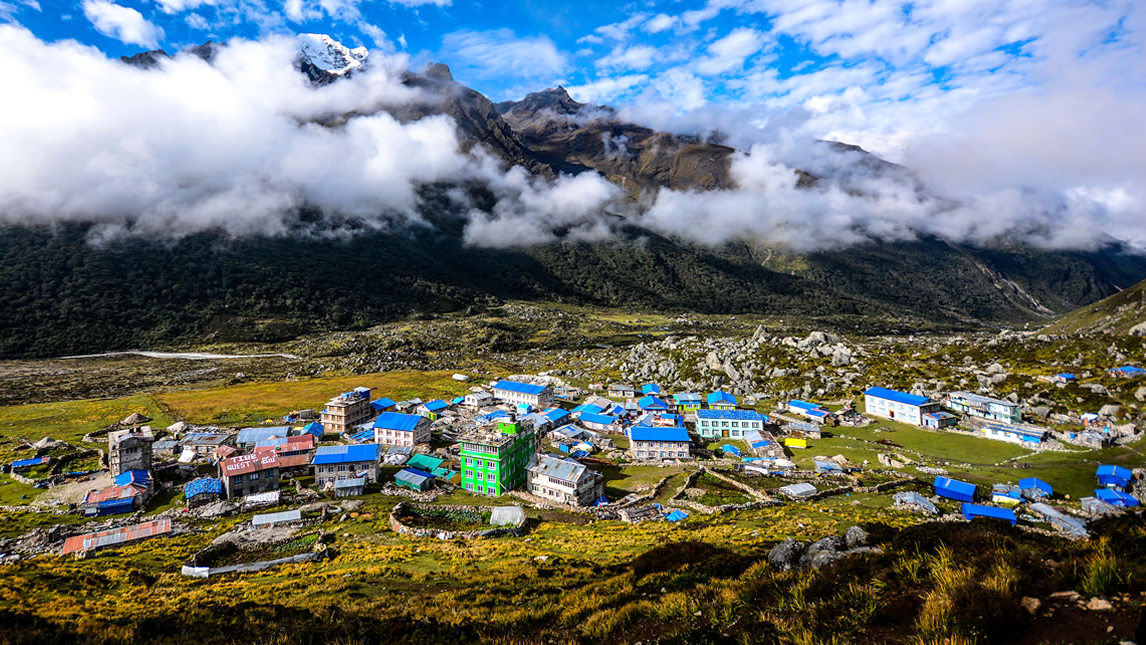
Gosaikunda Lake Trek: Discover the mystical allure of Gosaikunda Lake with our specialized trekking itinerary. Nestled amidst the Langtang National Park, this alpine lake is surrounded by snow-clad mountains and holds immense religious significance. Our Gosaikunda Lake trek promises an off-the-beaten-path adventure, offering a serene escape into the heart of the Himalayas.
Upper Mustang Trek: Explore the ancient kingdom of Mustang with its unique Tibetan culture. Visit the walled city of Lo Manthang and its ancient monasteries. Experience the stark beauty of the trans-Himalayan landscape.
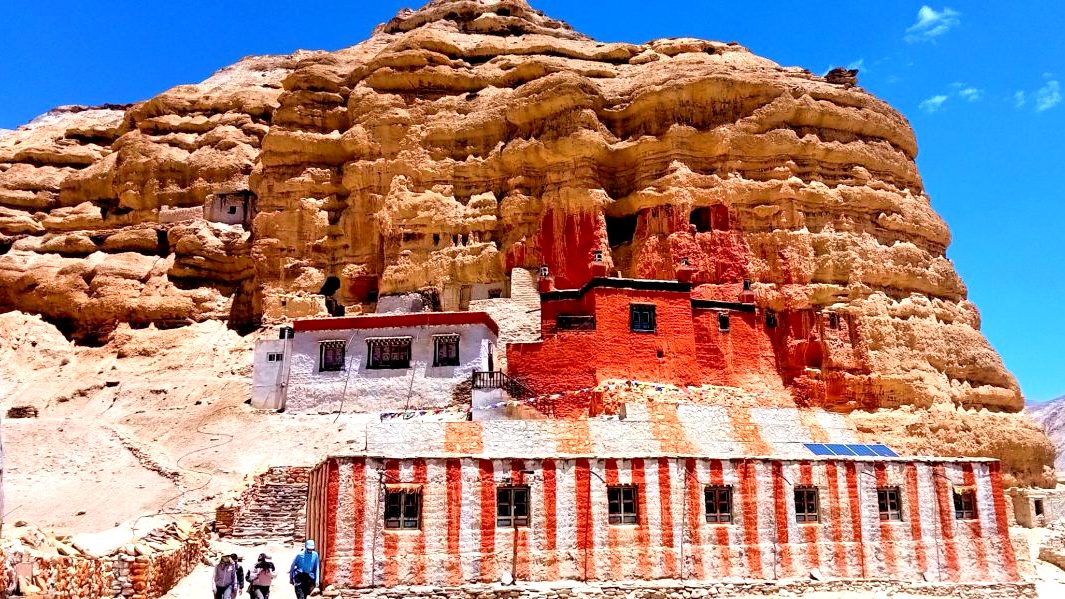
Kanchenjunga Base Camp Trek: Trek to the base camp of the world's third-highest peak, Mount Kanchenjunga. Explore the remote and pristine landscapes of Eastern Nepal. Encounter diverse flora and fauna in the Kanchenjunga Conservation Area.
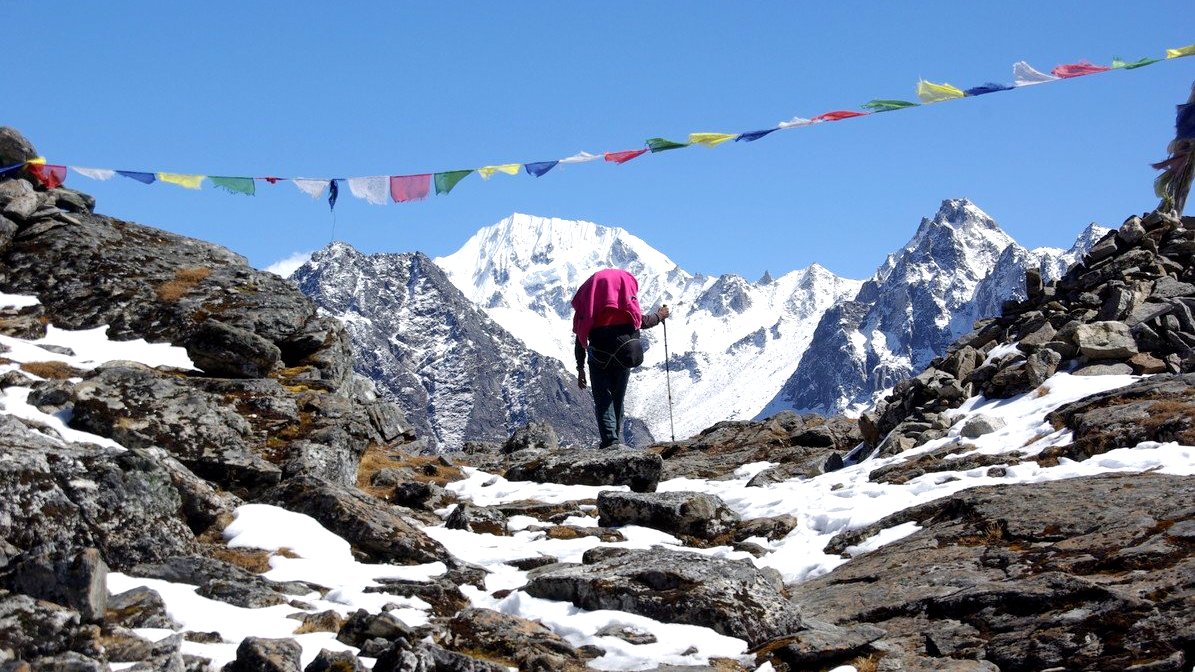
At Luxury Holidays Nepal, we understand that each trek is a personal odyssey. Our experienced guides, comfortable accommodations, and attention to detail guarantee an unforgettable Himalayan adventure. Whether you're a seasoned trekker or a first-time explorer, let us be your companion on the path to discovering the top things to do in Nepal through these extraordinary Himalayan treks.
Cultural Extravaganza in Kathmandu
Nepal, a land steeped in history and cultural richness, invites you to embark on a captivating journey through its capital city, Kathmandu. At Luxury Holidays Nepal, we curate an immersive experience that transcends the ordinary, allowing you to witness the vibrant tapestry of Nepal's heritage. Prepare to be enchanted as we guide you through the top cultural activities in Kathmandu, unveiling the city's timeless treasures.
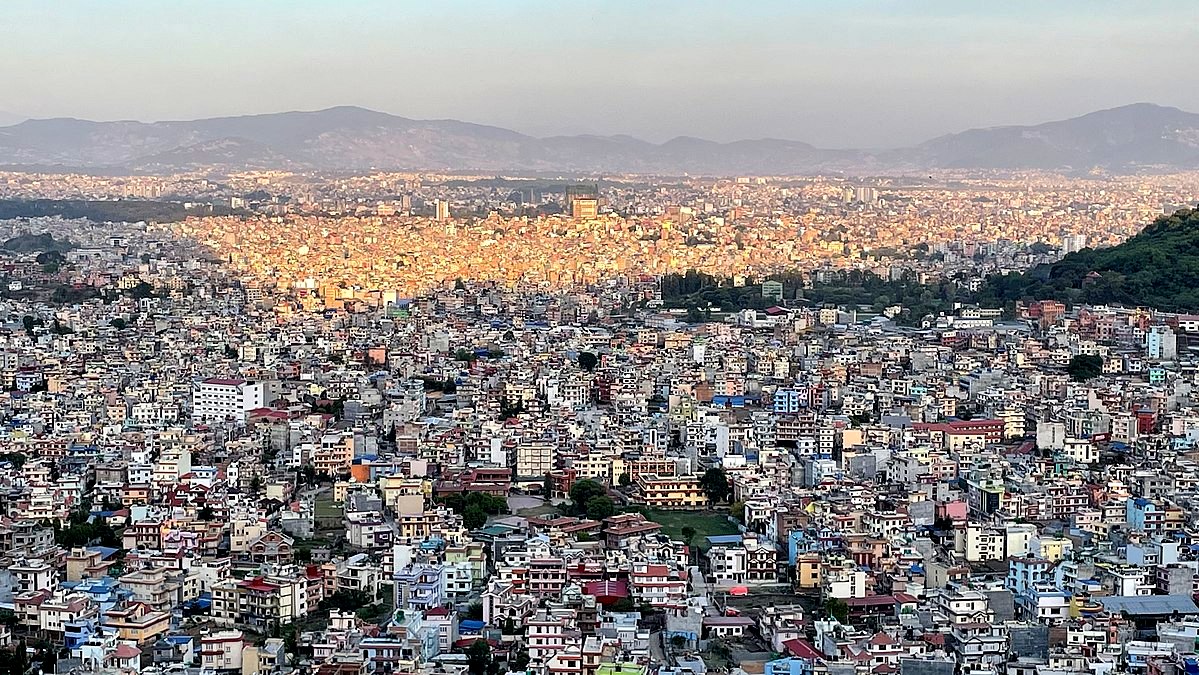
Durbar Square - A Living Museum: Kathmandu Durbar Square stands as a testament to Nepal's royal history, adorned with ancient palaces, courtyards, and temples. As you stroll through this living museum, our expert guides will narrate the tales of kings and dynasties, offering a glimpse into the architectural marvels of bygone eras.
Swayambhunath Stupa - The Monkey Temple: Perched atop a hill, the Swayambhunath Stupa offers panoramic views of Kathmandu Valley. This sacred site is adorned with the watchful eyes of the Buddha and is surrounded by playful monkeys. Our cultural extravaganza includes a visit to this iconic stupa, where spirituality and natural beauty converge.
-0.jpg)
Pashupatinath Temple - A Spiritual Oasis: As one of the holiest Hindu shrines globally, the Pashupatinath Temple holds immense religious significance. Our cultural tour takes you to this spiritual oasis on the banks of the Bagmati River, allowing you to witness the rituals and traditions that have been practiced for centuries.
Boudhanath Stupa - The Mandala of Enlightenment: The colossal Boudhanath Stupa stands as a symbol of enlightenment and harmony. Surrounded by a myriad of monasteries, this UNESCO World Heritage site is a sanctuary for Buddhist rituals. Our cultural extravaganza includes a visit to this sacred mandala, immersing you in the spiritual ambiance that pervades the air.
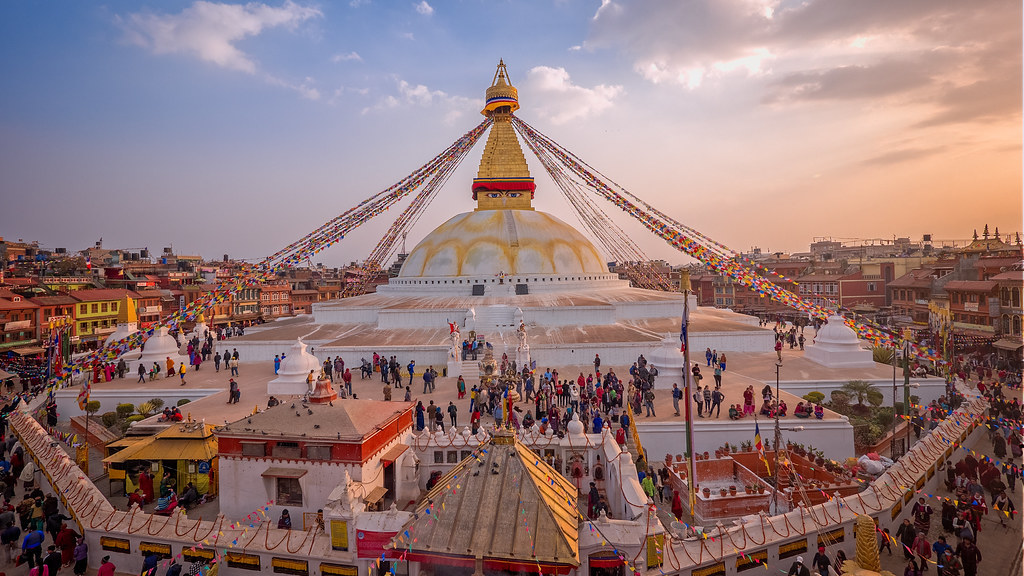
Patan Durbar Square: Explore the well-preserved Patan Durbar Square, another UNESCO World Heritage Site. Discover ancient palaces, temples, and courtyards showcasing Newari architecture. Visit the Patan Museum to see a collection of traditional art and artifacts.
Bhaktapur Durbar Square - Timeless Elegance: Venture into the timeless elegance of Bhaktapur Durbar Square, a gem of medieval art and architecture. Our curated cultural extravaganza ensures a deep dive into the Durbar Square's intricately carved palaces, courtyards, and temples. Witness cultural performances and partake in the city's vibrant energy.
Nagarkot Sunrise Experience: Wake up to the breathtaking sunrise over the Himalayas from the hill station of Nagarkot. Enjoy panoramic views of iconic peaks, including Everest, Langtang, and Annapurna. Experience the serene ambiance and fresh mountain air in this tranquil setting.
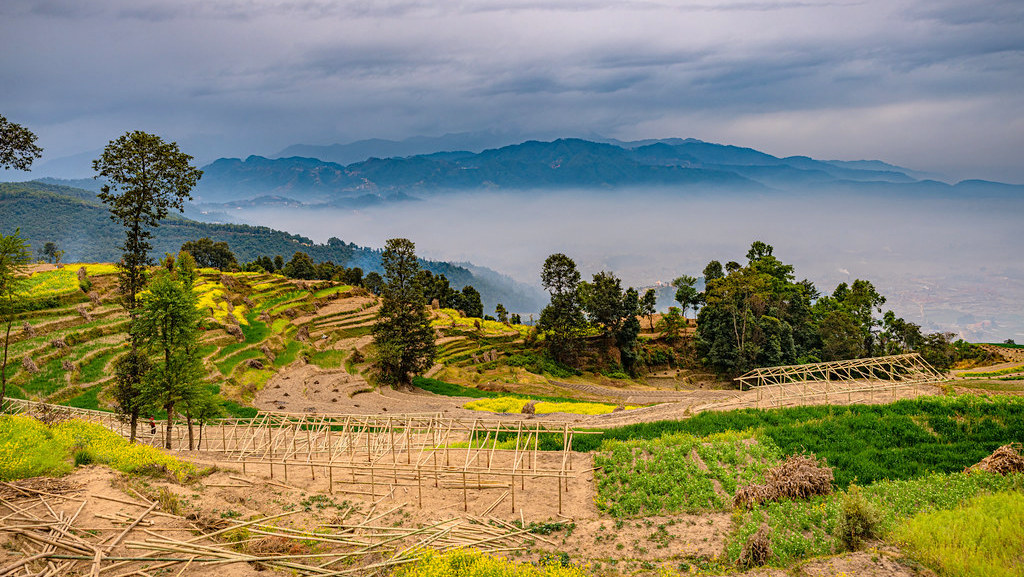
Changu Narayan Temple: Visit the ancient Changu Narayan Temple, dedicated to Lord Vishnu and renowned for its exquisite wood and stone carvings. Explore the temple premises, featuring statues, inscriptions, and a stone slab dating back to the 5th century. Witness the vibrant culture of the local Newar community surrounding the temple.
Shivapuri Nagarjun National Park: Escape the urban hustle and bustle with a visit to Shivapuri Nagarjun National Park, a pristine natural sanctuary on the outskirts of Kathmandu. Our cultural extravaganza includes a hike through lush forests and serene landscapes, offering a perfect blend of nature and spirituality. Visit the Nagi Gompa monastery and enjoy panoramic views of the Kathmandu Valley.
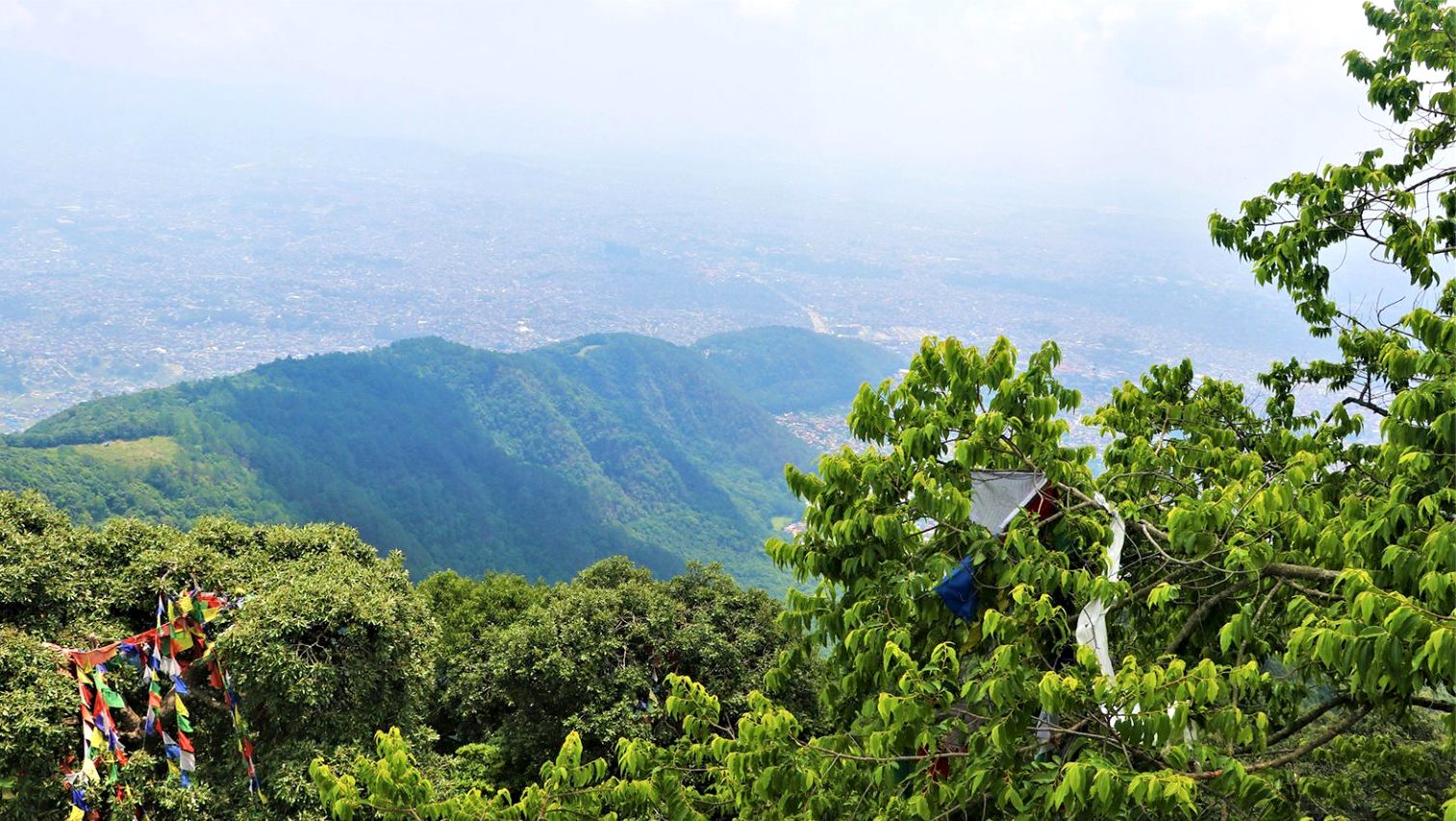
At Luxury Holidays Nepal, we understand the significance of cultural exploration. Our guided tours in Kathmandu promise an in-depth understanding of Nepal's heritage, blending the ancient with the contemporary. Join us on this cultural extravaganza and let the city of Kathmandu unfold its treasures, providing you with memories that resonate with the essence of Nepal's rich cultural tapestry.
Tranquil Retreats in Pokhara
Nepal, a land of serene beauty and unparalleled landscapes, invites you to discover the epitome of tranquility in the enchanting city of Pokhara. At Luxury Holidays Nepal, we curate an exquisite experience, guiding you through the top tranquil retreats that define the essence of this Himalayan gem. Join us as we unveil the serene lakes, picturesque landscapes, and cultural wonders that make Pokhara a haven for those seeking respite and rejuvenation.
Boating on Phewa Lake - Serenity Afloat: Embark on a leisurely boat ride on the pristine waters of Phewa Lake, surrounded by the majestic Annapurna Range. Our tranquil retreat package includes a private boating experience, allowing you to absorb the breathtaking views of the mountains mirrored in the calm waters while relishing the tranquility that defines Pokhara.
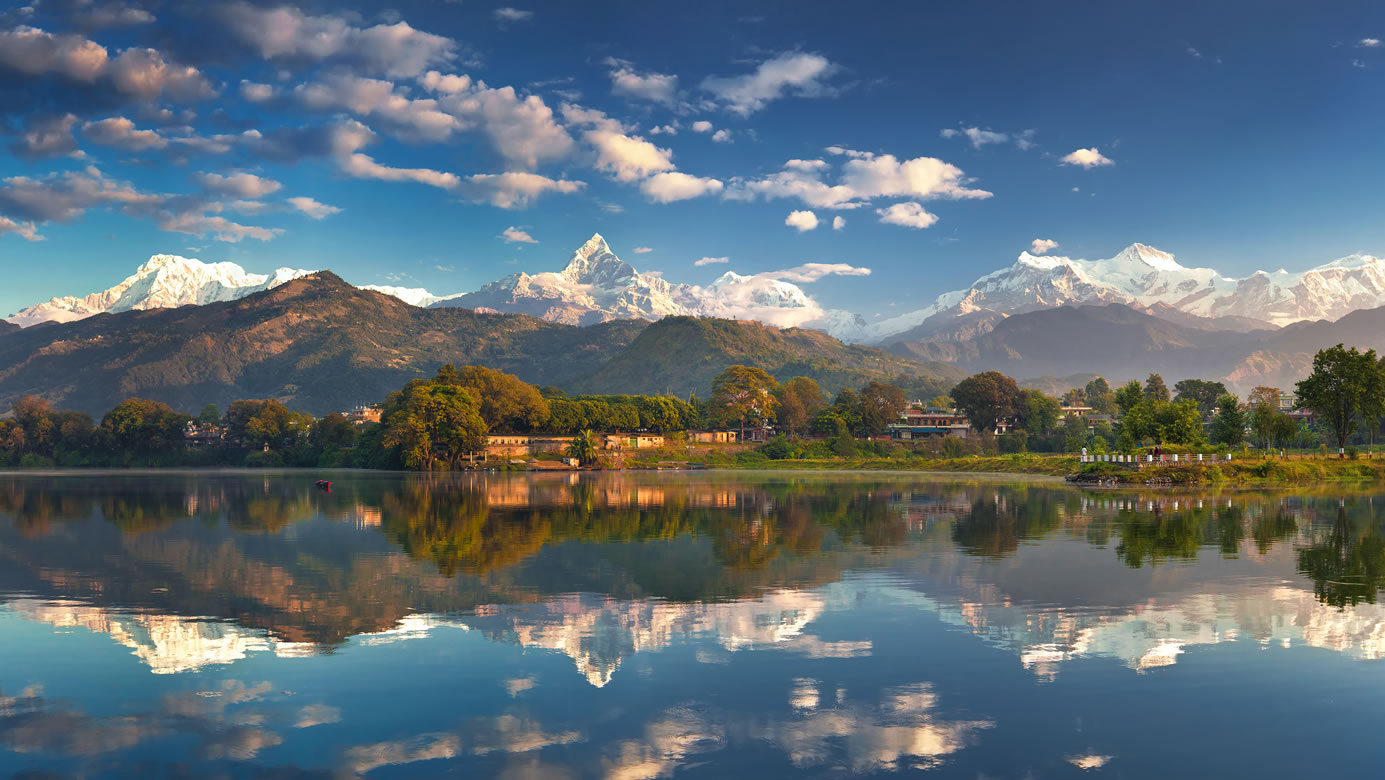
Peaceful Strolls along Lakeside - Lakeside Charms: Experience the charm of Pokhara's Lakeside with peaceful strolls along the promenade. Our curated retreat allows you to explore the vibrant streets, lined with cozy cafes, boutique shops, and cultural delights. Absorb the laid-back atmosphere and revel in the simplicity of lakeside living.
Paragliding Over Pokhara - Soaring Serenity: Experience the ultimate serenity from a unique perspective with paragliding over Pokhara. Our tranquil retreat package includes a tandem paragliding adventure, providing a bird's-eye view of the city, the serene lakes, and the surrounding mountains.
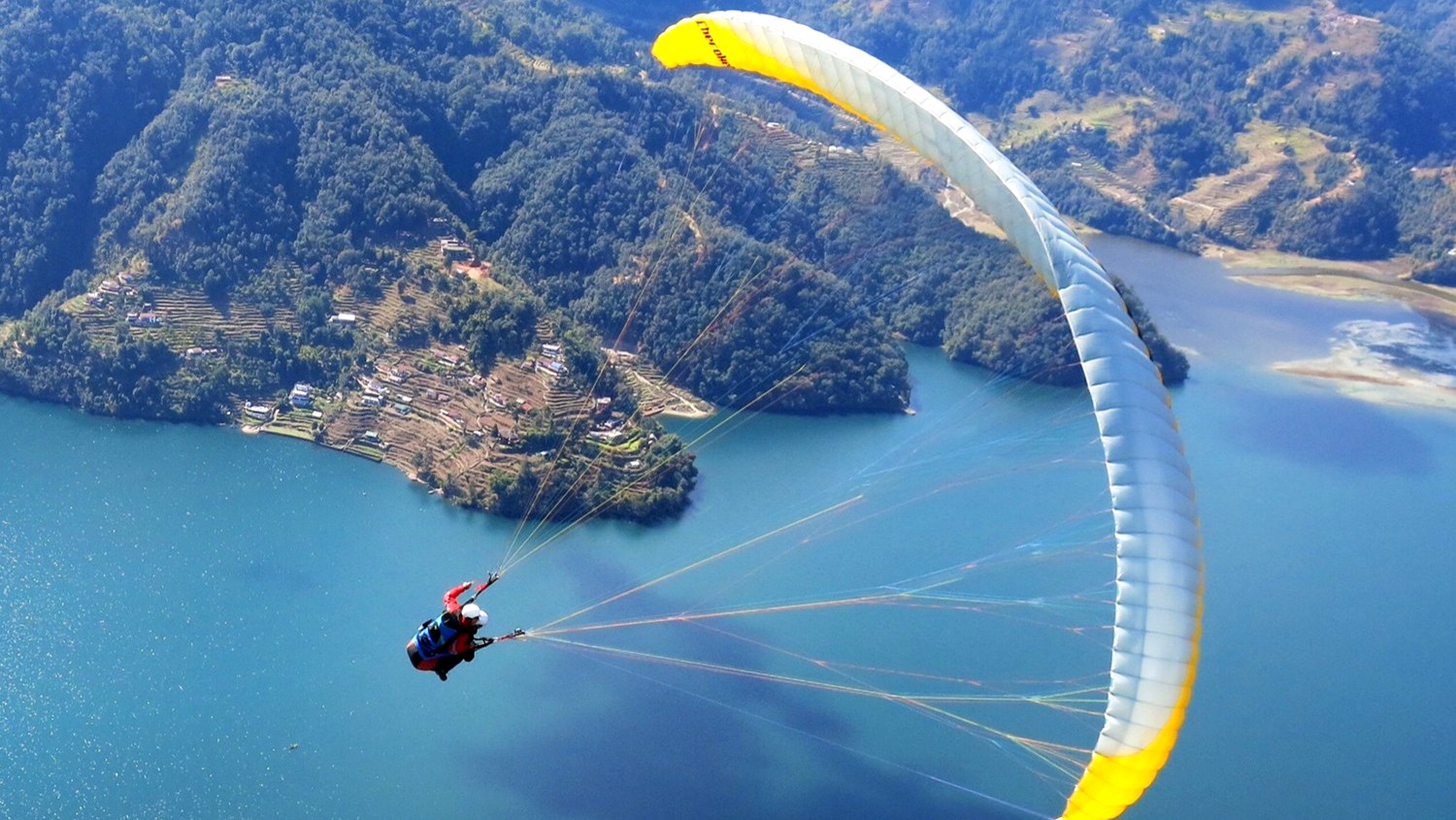
Sarangkot Sunrise Excursion - Dawn's Gentle Embrace: Ascend to the hilltop village of Sarangkot for a spectacular sunrise experience. Our tranquil retreat package includes a guided excursion, offering panoramic views of the Annapurna and Dhaulagiri mountain ranges as the first light of day paints the sky in hues of orange and gold.
Exploring Gupteshwor Cave - Mystical Underground Realm: Delve into the mystical underground realm of Gupteshwor Cave, a sacred site adorned with stalactites and stalagmites. Our retreat itinerary includes an exploration of this fascinating cave, allowing you to marvel at its geological wonders and spiritual significance.
Bindhyabasini Temple - Cultural Serenity: Discover cultural serenity at Bindhyabasini Temple, perched atop a hill with panoramic views of Pokhara Valley. Our curated retreat includes a visit to this sacred site, where you can partake in peaceful moments of reflection amidst the spiritual ambiance.
At Luxury Holidays Nepal, we understand the art of tranquility. Our curated retreats in Pokhara promise an escape from the hustle and bustle, offering a harmonious blend of natural beauty, cultural richness, and serene moments. Join us as we guide you through the tranquil retreats of Pokhara, where every experience is crafted to leave you refreshed, rejuvenated, and inspired by the serenity that surrounds you.
Spiritual Journey to Lumbini
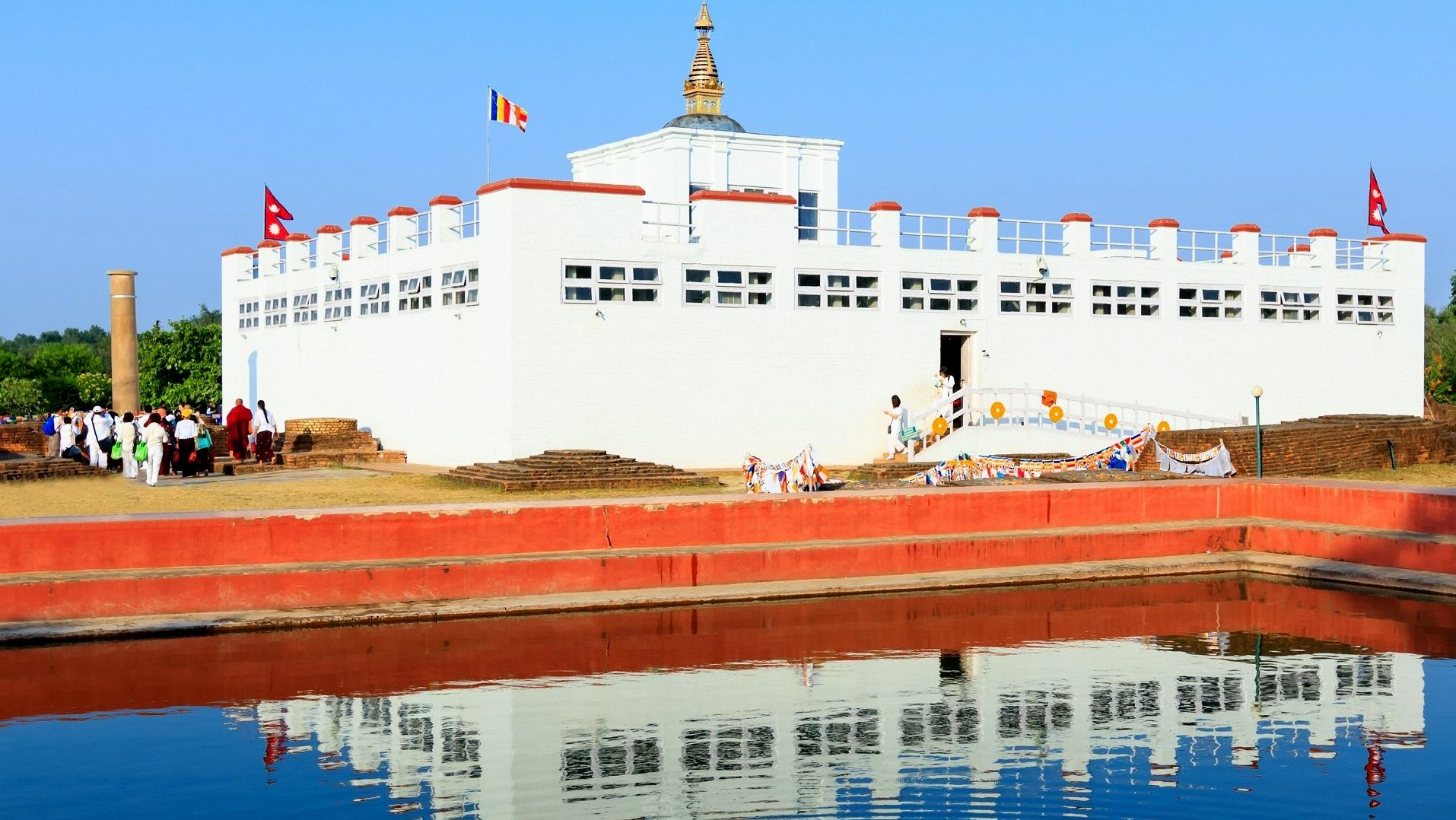
Visit to Maya Devi Temple - Sacred Birthplace: Begin your spiritual journey at the revered Maya Devi Temple, marking the exact spot where Siddhartha Gautama, later known as Buddha, was born. Our pilgrimage experience includes a guided tour of this sacred site, allowing you to witness the ancient marker stone and feel the spiritual energy that permeates the surroundings.
Ashoka Pillar - Ancient Testimony: Explore the ancient Ashoka Pillar, erected by the great Indian Emperor Ashoka to commemorate his pilgrimage to Lumbini. Our curated journey includes a visit to this historic monument, where you can reflect on the enduring legacy of Buddhism and the significance of Lumbini in its history.
Lumbini Garden - Tranquil Retreat: Find solace amidst the lush landscapes of Lumbini Garden, a peaceful retreat adorned with monastic zones and beautifully landscaped grounds. Our spiritual journey includes leisurely strolls through this serene garden, providing moments of reflection and introspection.
World Peace Pagoda - Harmony in Architecture: Discover the architectural harmony of the World Peace Pagoda in Lumbini. Our pilgrimage experience includes a visit to this iconic stupa, built to promote world peace. Enjoy panoramic views of Lumbini and the surrounding landscapes as you ascend to the pagoda.
Meditation and Prayer Sessions - Spiritual Reflection: Engage in meditation and prayer sessions led by experienced practitioners in the tranquil ambiance of Lumbini. Our curated spiritual journey allows you to immerse yourself in the spiritual practices that have echoed through the centuries, fostering a deeper connection to the teachings of Buddha.
Monastic Zones Exploration - Sacred Sanctuaries: Explore the various monastic zones within Lumbini, each representing different Buddhist traditions and countries. Our guided pilgrimage ensures an insightful exploration of these sacred sanctuaries, providing a comprehensive understanding of the global significance of Lumbini.
At Luxury Holidays Nepal, we understand the sacredness of a spiritual journey. Our curated pilgrimage to Lumbini goes beyond the physical realm, offering a transformative experience that resonates with the essence of Buddhism. Join us on this spiritual odyssey, where the hallowed grounds of Lumbini become a sanctuary for inner reflection, peace, and spiritual awakening.
Wildlife Safari in Chitwan National Park
Nepal, renowned for its diverse landscapes, invites nature enthusiasts to embark on a thrilling expedition into the heart of the wild at Chitwan National Park. At Luxury Holidays Nepal, we present a unique opportunity to discover the rich biodiversity of this UNESCO World Heritage site through an unforgettable wildlife safari. Join us as we guide you through the top experiences in Chitwan, promising a safari adventure filled with encounters with exotic wildlife and the enchanting natural beauty of the park.
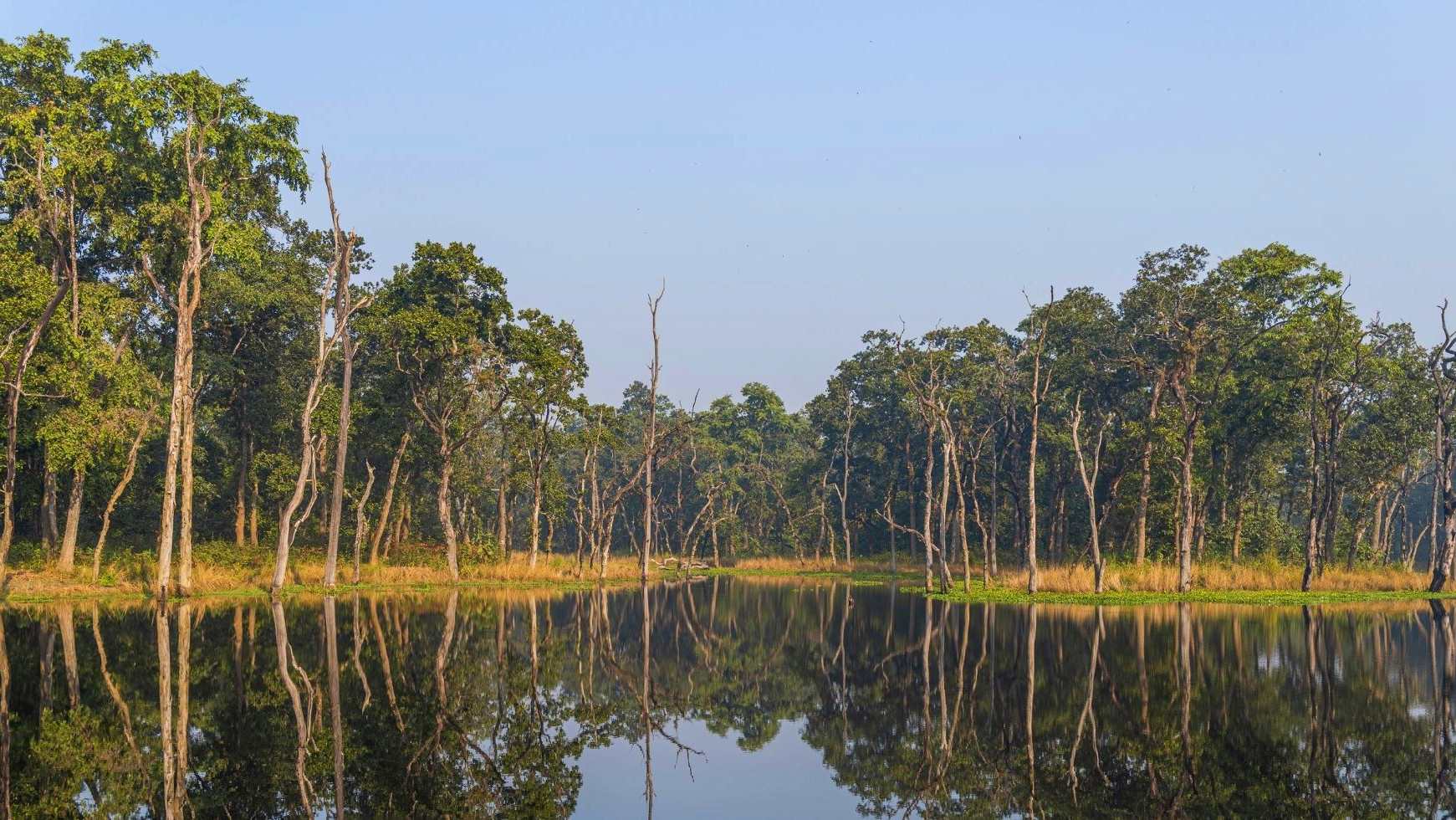
Jungle Safari on Elephant Back - Majestic Explorations: Embark on a majestic journey through the dense jungles of Chitwan atop the back of an elephant. Our wildlife safari package includes a guided tour, allowing you to traverse the park's terrain while spotting rhinoceros, deer, various bird species, and, if you're fortunate, the elusive Bengal tiger.
Jeep Safari - Explore the Wilderness: For a more intimate and dynamic wildlife experience, opt for a jeep safari through the rugged trails of Chitwan National Park. Our expert guides will lead you to prime wildlife habitats, increasing your chances of encountering the diverse fauna that calls the park home.
Canoeing on the Rapti River - Riverside Serenity: Drift along the gentle currents of the Rapti River in a traditional dugout canoe. Our wildlife safari package includes a serene canoeing experience, allowing you to witness riverbank life, spot aquatic birds, and, with luck, catch a glimpse of the elusive gharial crocodile basking in the sun.
Nature Walks with Experienced Guides - Discover the Details: Immerse yourself in the sights and sounds of Chitwan with guided nature walks. Our experienced naturalists will lead you through the park's trails, offering insights into the intricate ecosystems and the fascinating flora and fauna that thrive in this pristine wilderness.
Bird Watching - A Paradise for Bird Enthusiasts: Chitwan National Park is a haven for birdwatchers, boasting over 500 species of birds. Our wildlife safari includes dedicated birdwatching sessions, providing opportunities to spot rare and vibrant avian species in their natural habitat.
Visit to the Elephant Breeding Center - Conservation in Action: Gain a deeper understanding of elephant conservation efforts with a visit to the Elephant Breeding Center. Our wildlife safari package includes an informative tour, allowing you to observe the playful antics of baby elephants and learn about the park's commitment to preserving these majestic creatures.
At Luxury Holidays Nepal, we are committed to providing an immersive and responsible wildlife safari experience in Chitwan National Park. Our dedication to conservation, coupled with expert guides and comfortable accommodations, ensures that your safari adventure is not only thrilling but also environmentally conscious. Join us as we unveil the wonders of Chitwan, promising an unforgettable wildlife safari that will leave you with lasting memories of Nepal's natural splendor.
Helicopter Tours in Nepal
Experience Nepal like never before with our exclusive Helicopter Tours, designed to provide a bird's-eye view of the majestic landscapes and iconic landmarks. At Luxury Holidays Nepal, we offer a unique blend of adventure and luxury, allowing you to soar through the skies and witness the breathtaking beauty of the Himalayas and beyond. Join us for an unforgettable journey where every moment is a panorama of awe-inspiring vistas.
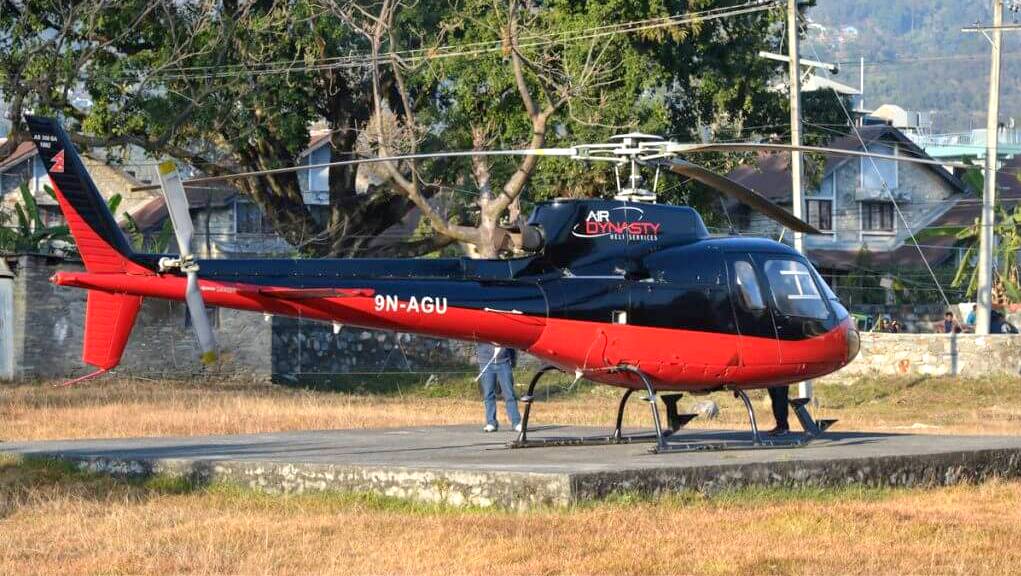
Everest Base Camp Helicopter Tour: Embark on the ultimate adventure with our Everest Base Camp Helicopter Tour. Soar above the world's highest peak, Mount Everest, and witness the Khumbu Glacier and surrounding Himalayan giants. Land at Kala Patthar for an up-close view of Everest before enjoying a luxurious breakfast amid the Himalayan panorama.
Annapurna Base Camp Helicopter Tour: Experience the grandeur of the Annapurna Range with our Annapurna Base Camp Helicopter Tour. Soar over lush landscapes, traditional villages, and terraced fields as you approach the Annapurna Sanctuary. Enjoy a scenic landing at Annapurna Base Camp, surrounded by towering peaks.
Langtang Valley Helicopter Tour: Discover the pristine beauty of the Langtang Valley with our Langtang Valley Helicopter Tour. Soar above picturesque landscapes, glacial lakes, and traditional Tamang villages. Land at Kyanjin Gompa for breathtaking views of Langtang Lirung and the surrounding peaks.
Mustang Helicopter Tour: Embark on a cultural and scenic journey with our Mustang Helicopter Tour. Soar over the arid landscapes of Upper Mustang, witness ancient caves, and explore the walled city of Lo Manthang. This tour offers a unique perspective of the trans-Himalayan region.
Gosaikunda Lake Helicopter Tour: Embark on a high-altitude adventure with our Gosaikunda Lake Helicopter Tour. Soar over the Langtang region and witness the pristine beauty of Gosaikunda Lake surrounded by snow-capped peaks. Enjoy a memorable landing at the lake for a serene and picturesque experience.
Rara Lake Helicopter Tour: Experience the tranquility of Western Nepal with our Rara Lake Helicopter Tour. Soar over remote landscapes and dense forests before landing at the pristine Rara Lake. Enjoy the solitude and breathtaking views of one of Nepal's largest and most beautiful lakes.
At Luxury Holidays Nepal, we redefine adventure by elevating it to new heights. Our Helicopter Tours offer a luxurious and exhilarating way to explore the diverse landscapes of Nepal, from the towering peaks of the Himalayas to the serene lakes and valleys. Join us for a sky-high adventure where every moment is a breathtaking masterpiece.
Sky-High Adventure: Mountain Flight in Nepal
Nepal, home to the world's most majestic peaks, invites you to embark on a breathtaking journey into the heart of the Himalayas through a mesmerizing Mountain Flight. At Luxury Holidays Nepal, we curate an unparalleled aerial adventure, guiding you through the snow-capped peaks, deep valleys, and towering summits that define Nepal's rugged landscape. Join us as we soar to new heights on an exhilarating mountain flight, providing a bird's-eye view of the unparalleled beauty that awaits.
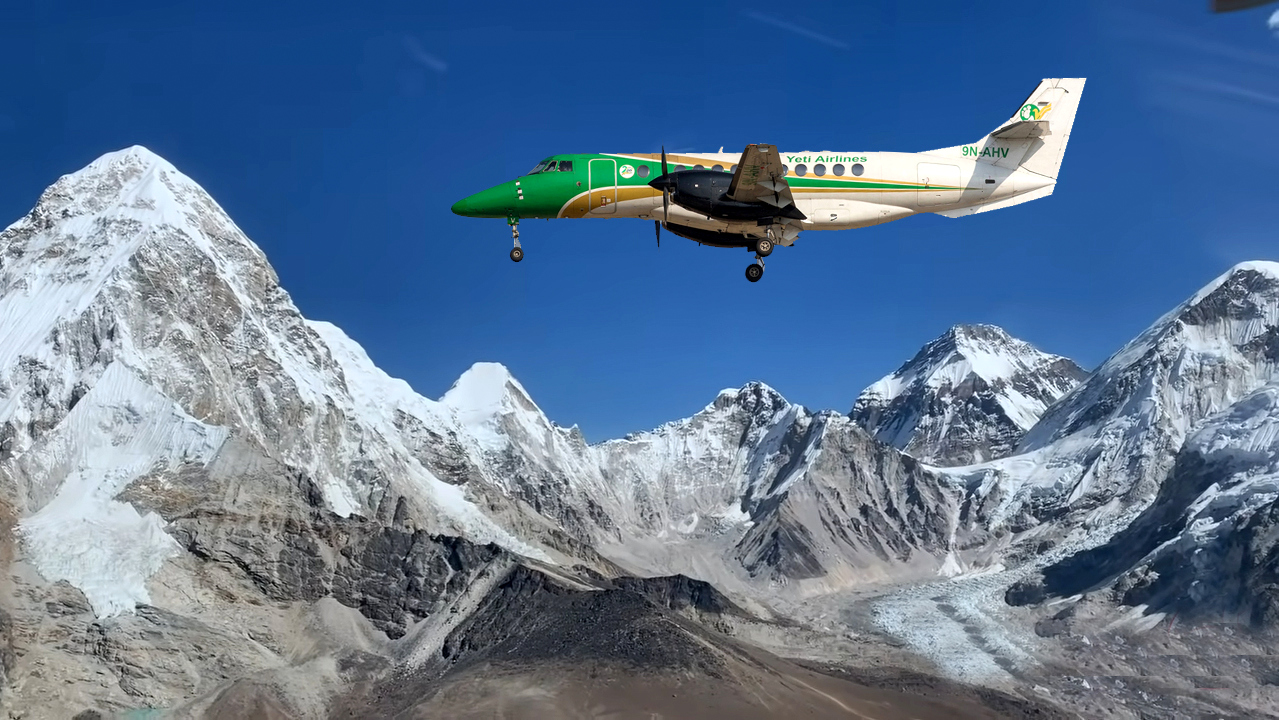
Everest Panorama Flight - Majestic Peaks Unveiled: Embark on a once-in-a-lifetime experience with our Everest Panorama Flight. Witness the awe-inspiring beauty of the world's highest peak, Mount Everest, along with a panorama of neighboring summits, including Lhotse, Nuptse, and Ama Dablam. Our mountain flight ensures every passenger has a window seat for uninterrupted views of these towering giants.
Himalayan Range Spectacle - An Unmatched Vista: Revel in the spectacle of the entire Himalayan range during our panoramic mountain flight. Soar over the Annapurna and Dhaulagiri ranges, catching glimpses of iconic peaks like Machapuchare and Manaslu. Our expert pilots navigate through the mountainous terrain, providing a front-row seat to the grandeur of nature's architectural marvels.
Aerial View of Glacial Lakes - Nature's Jewels: Marvel at the glacial lakes nestled amidst the rugged terrain as you glide over the Himalayas. Our mountain flight itinerary includes a strategic route that allows you to witness the pristine beauty of these high-altitude lakes, reflecting the clear blue skies and surrounding peaks.
Professional Pilots and Comfortable Aircraft - Unmatched Safety: Entrust your mountain flight adventure to our team of professional pilots, ensuring a safe and enjoyable journey. Our fleet of comfortable and well-equipped aircraft guarantees a smooth and secure experience, allowing you to focus on the awe-inspiring landscapes unfolding beneath you.
Year-Round Availability - Seasons of Beauty: Experience the beauty of the Himalayas in every season, as our mountain flights are available year-round. Whether you prefer the clear skies of autumn or the snowy landscapes of winter, our flexible scheduling ensures you witness the ever-changing moods of the mountains.
At Luxury Holidays Nepal, we understand the allure of reaching new heights. Our curated mountain flight experience promises not just a visual feast of the Himalayas but an unforgettable journey that transcends the ordinary. Join us as we take you sky-high, revealing the unparalleled beauty of Nepal's mountainous panorama, and providing memories that will last a lifetime.
Adventure Sports Thrills
Nepal, a haven for thrill-seekers, beckons adventurers from around the world with its exhilarating array of adventure sports. At Luxury Holidays Nepal, we curate an adrenaline-fueled odyssey that pushes the boundaries of excitement. Join us as we guide you through the top adventure sports in Nepal, promising an unforgettable journey of heart-pounding thrills.
White-Water Rafting in the Trishuli River - Conquer the Rapids: Embark on a white-water rafting adventure on the Trishuli River, where the rush of adrenaline is matched only by the stunning riverine landscapes. Our expert guides ensure a safe yet thrilling experience as you navigate through the exhilarating rapids of this iconic river.
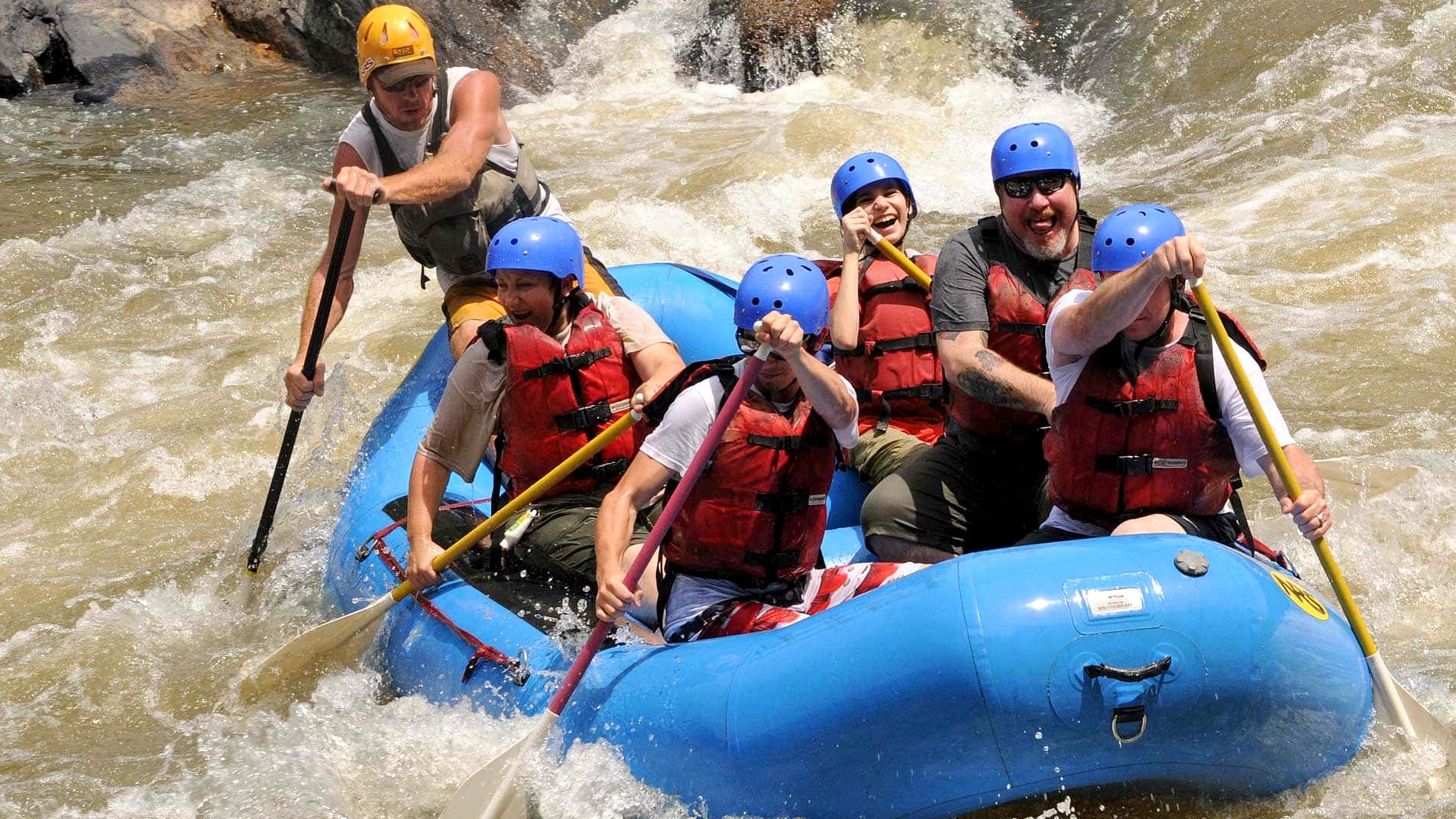
Paragliding in Pokhara - Soar Like a Bird: Experience the unparalleled thrill of paragliding amidst the stunning landscapes of Pokhara. Our adventure sports package includes a tandem paragliding adventure, allowing you to soar high above Phewa Lake and witness the majestic Himalayan peaks from a bird's-eye view.
Bungee Jumping in the Himalayas - Defy Gravity: For the ultimate adrenaline rush, take a leap of faith with bungee jumping in the heart of the Himalayas. Our adventure enthusiasts can experience the thrill of freefall from one of the world's highest bungee platforms, suspended above the raging Bhote Koshi River.
Rock Climbing in Kathmandu - Scale New Heights: Discover the adventure of rock climbing amidst the natural cliffs surrounding Kathmandu. Whether you're a beginner or an experienced climber, our adventure sports package includes a customized rock climbing experience, allowing you to conquer the heights with expert guidance.
Mountain Biking in Annapurna Circuit - Ride the Trails: Explore the rugged terrains of the Annapurna region on a thrilling mountain biking adventure. Our meticulously planned itinerary takes you through ancient trails, charming villages, and breathtaking landscapes, providing an adrenaline-pumping experience for biking enthusiasts.
Zip-lining in Sarangkot - A Rush of Speed: For a quick and intense thrill, zip-lining in Sarangkot is a must-try adventure. Soar through the air at high speeds, enjoying panoramic views of the Annapurna range. Our adventure sports package ensures a safe and exhilarating zip-lining experience in the heart of Pokhara.
At Luxury Holidays Nepal, we believe in turning adventure dreams into reality. Our expert guides, state-of-the-art equipment, and commitment to safety ensure that every adventure sports enthusiast can push their limits in the breathtaking landscapes of Nepal. Join us on an unforgettable journey of adrenaline highs and heart-pounding thrills, as we redefine the meaning of adventure in the spectacular terrain of Nepal.
Local Experiences and Hidden Gems
Nepal, a country of diverse landscapes and climates, invites you to choose the ideal time for your journey, ensuring an experience that aligns with your preferences and desired activities. At Luxury Holidays Nepal, we provide seasonal wisdom to guide you on the best times to visit, ensuring that every moment of your adventure is enriched by favorable weather and optimal conditions. Join us as we explore the nuances of each season, helping you plan the perfect itinerary for your Nepal expedition.
Spring (March to May) - Blooms and Mild Temperatures: Spring unfolds a picturesque tapestry as rhododendrons bloom, painting the hills with vibrant colors. With mild temperatures and clear skies, this season is perfect for trekking, mountaineering, and witnessing the abundance of flora and fauna. The post-monsoon clarity offers stunning views of the Himalayas.
Summer (June to August) - Monsoon Splendor: While the monsoon brings lush greenery and transforms Nepal into a verdant paradise, trekking during this season requires careful consideration. However, the lower regions and rain-shadow areas, such as Upper Mustang, remain accessible. Summer is an ideal time for cultural tours, wildlife safaris, and exploring the diverse cultural heritage of Nepal.
Autumn (September to November) - Peak Season Brilliance: Considered the best time to visit Nepal, autumn boasts clear skies, pleasant temperatures, and breathtaking vistas. This is the peak trekking and mountaineering season, attracting adventurers from around the globe. The post-monsoon period ensures the landscapes are still lush, offering a balance between favorable weather and stunning scenery.
Winter (December to February) - Tranquil Beauty: While winter brings cooler temperatures, it offers a unique charm with snow-covered landscapes and clear mountain views. The lowlands and cultural sites experience mild temperatures, making winter an excellent time for city tours, wildlife safaris, and experiencing the cultural richness of Nepal.
Festival Seasons - Cultural Vibrancy Throughout the Year: Nepal's festivals add a vibrant layer to every season. From the colorful celebrations of Dashain and Tihar in autumn to the cultural richness of Holi and Indra Jatra in spring, festivals provide an opportunity to immerse yourself in the local traditions and add a cultural dimension to your journey.
Whether you seek the blossoms of spring, the vibrant cultural celebrations of autumn, or the tranquility of winter, Nepal welcomes you year-round with diverse and enriching experiences. Let the seasonal wisdom from Luxury Holidays Nepal guide you, ensuring that your visit to this Himalayan paradise becomes a journey of a lifetime.
Nepal, a land of awe-inspiring landscapes and cultural richness, beckons adventurers and culture enthusiasts alike to embark on a journey of a lifetime with Luxury Holidays Nepal. From the towering peaks of the Himalayas to the ancient temples and bustling markets of Kathmandu, the diverse array of experiences is unparalleled. Whether trekking to iconic destinations like Everest Base Camp and Annapurna Circuit, indulging in spiritual journeys to Lumbini, or soaring above the majestic peaks in a helicopter tour, Nepal offers a tapestry of adventures. The curated itineraries, encompassing hidden gems, local experiences, and thrilling adventures, redefine travel in the Himalayan region. With expert guidance, personalized service, and a commitment to showcasing the best of Nepal, Luxury Holidays Nepal ensures that every moment becomes a cherished memory in this Himalayan paradise.
FAQs: Top Things to Do in Nepal
Q: What are the must-visit tourist attractions in Nepal?
A: Nepal boasts a diverse range of attractions. Must-visit places include Everest Base Camp, Annapurna Circuit, Lumbini (Buddha's birthplace), Chitwan National Park, Bhaktapur Durbar Square, and Pokhara's Phewa Lake.
Q: What are the best places to visit in Nepal?
A: Nepal offers a myriad of stunning destinations. Top places to visit include Kathmandu Valley, Pokhara, Annapurna Region, Everest Region, Chitwan, Lumbini, and the mystical Upper Mustang.
Q: What are the top activities to experience in Nepal?
A: Nepal offers a variety of activities. Top experiences include trekking in the Himalayas, cultural exploration in Kathmandu, wildlife safaris in Chitwan, paragliding in Pokhara, mountain flights, and exploring ancient temples and monasteries.
Q: When is the best time to visit Nepal?
A: The best time to visit Nepal depends on your preferences and activities. Autumn (September to November) and spring (March to May) are ideal for trekking and cultural tours. Winter (December to February) offers clear skies, and monsoon (June to August) is suitable for cultural experiences.
Q: Are there any hidden gems in Nepal worth exploring?
A: Absolutely! Hidden gems include Rara Lake, Tsum Valley, Khopra Ridge, and Ilam. These off-the-beaten-path destinations offer unique landscapes, cultural richness, and serenity.
Q: What are the top Himalayan treks in Nepal?
A: Nepal is renowned for its Himalayan treks. Top treks include Everest Base Camp, Annapurna Circuit, Langtang Valley, Manaslu Circuit, Upper Mustang, and Kanchenjunga Base Camp.
Q: What adventure sports are available in Nepal?
A: Nepal is an adventure enthusiast's paradise. Experience paragliding in Pokhara, bungee jumping in the Bhote Koshi River, white-water rafting, mountain biking, rock climbing, and zip-lining.
Q: What cultural sites are a must-visit in Kathmandu?
A: Explore Bhaktapur Durbar Square, Swayambhunath (Monkey Temple), Pashupatinath Temple, Boudhanath Stupa, and the historic city of Patan for a rich cultural experience.
Q: How can I plan my itinerary for Nepal?
A: Planning depends on your interests and the duration of your stay. Consult with Luxury Holidays Nepal for personalized itineraries, considering factors like trekking preferences, cultural interests, and the best time to visit.
Q: What are the local experiences offered by Luxury Holidays Nepal?
A: Luxury Holidays Nepal provides unique local experiences, including homestays, traditional food tours, handicraft workshops, and community-driven tourism projects. These experiences offer authentic insights into local life.
If you need any further information, please contact us by email: at [email protected], Phone: +977- 985 100 5129 (WhatsApp)




